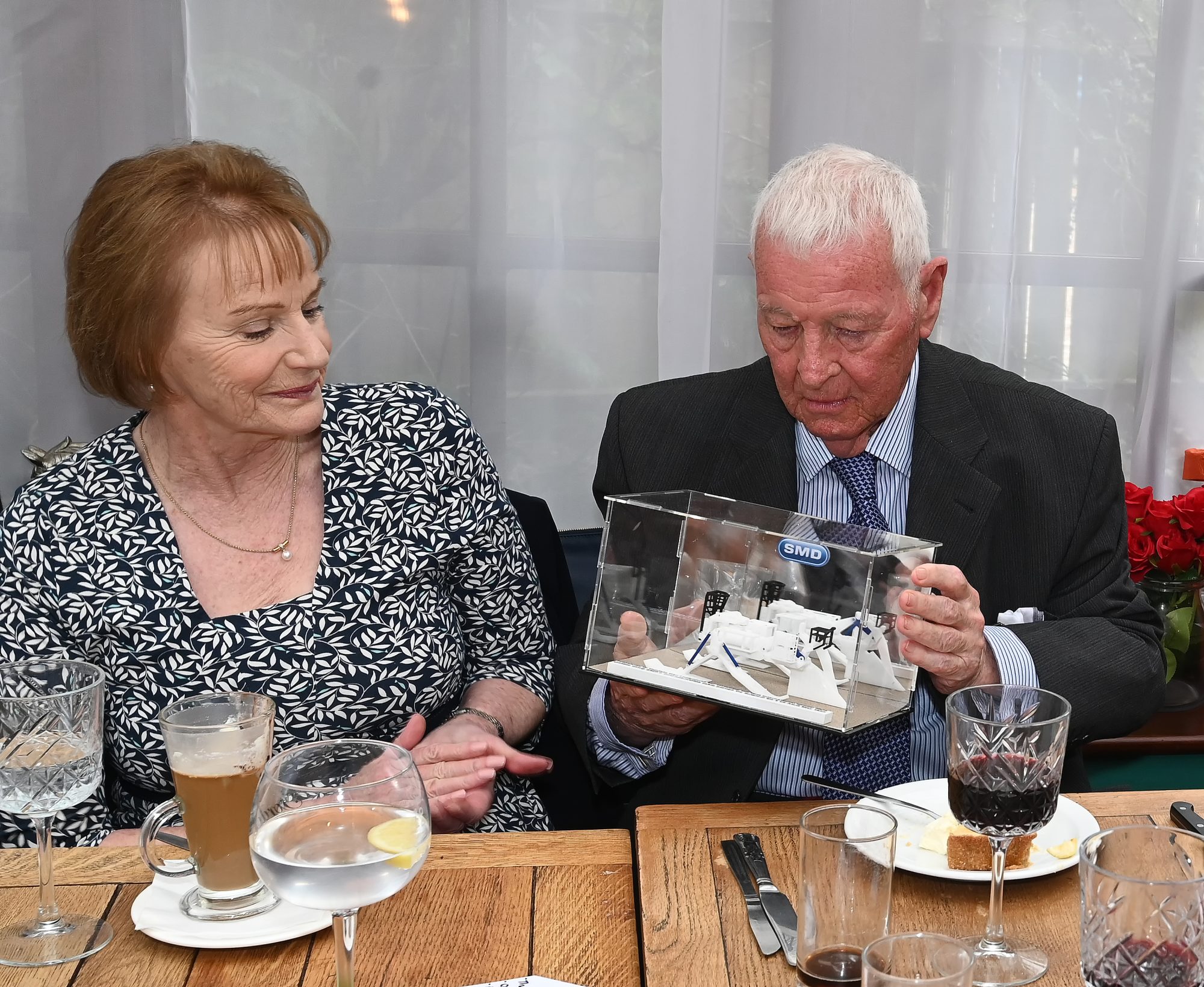SMD’s rich history as an industry-leading pioneer began in 1971 with the radical thinking of one man, Dr Alan Reece.
Sat at his dining room table in Wylam, Newcastle, Dr Reece redesigned an agricultural plough for subsea use, a true world first and one that saw the birth of SMD as we know it. Since this defining moment, a half-century of engineers and innovators have contributed to SMD’s success. One such figure is Captain Roy Longworth, whose passion and determination secured success during the first international use of SMD’s subsea plough.
Captain Roy recently celebrated his 80th birthday and in honour of this occasion, SMD is reflecting on his triumphant career and the invaluable contribution he made to the launch of the SMD cable plough.
The plough’s first commercial journey took place on board the CS Alert, a 24-year-old manually controlled cable ship with no GPS or computer assistance. At this time, a sea captain relied heavily on his personal judgement, looking out to sea and deeming conditions suitable or unsafe. However, this began to change under the leadership of Captain Roy.
Roy was the first captain to use accelerometers on board a cable ship. With these devices, he would accurately measure the ship’s movements and scientifically estimate the roughness of the waves. Using this information, he would then calculate the force with which the plough would hit the seabed, leading him to develop a set of safe launch and recovery criteria that revolutionised the field. Indeed, Roy’s pioneering work resulted in a 95 percent decrease in cable faults and is still used to this day.
Despite this breakthrough, the task of launching a plough remained incredibly demanding. During the launch, the ship was required to move slowly, whilst following a perfectly straight line of transit. As the plough was easily overturned by seabed debris, it also had to be kept within a narrow-surveyed corridor throughout the operation.
As with everything that threatened to stand in his way, Captain Roy approached this challenge with enthusiasm and determination. After months of trial and error at sea, he successfully devised a record-breaking technique that the European Subsea Cable Association deemed a “remarkable achievement that should be commended”.
Captain Roy began by casting the anchor a mile ahead of the ship, and used cable drum engines to pull the vessel slowly forwards. The resistance that this created was instrumental in ensuring a safe launch pace was maintained throughout the operation. Next, two tugs were attached to the ship and used to resist the strong cross tide and maintain a straight line of travel for cable-laying. Engineer, Rob Struzyna, witnessed this innovative technique first-hand and describes Captain Roy as “unique in coming up with this method, being willing to attempt it, and having the level of concentration needed to manage all the cables and lines throughout the long operation.”
Captain Roy’s achievements are recalled with admiration by so many of his friends and colleagues. They make it apparent that his engineering excellence is matched only by his outstanding enthusiasm and leadership.
Alison Toritani, the first female engineer deployed on a UK cable ship, describes Roy as “patient, humble and good spirited throughout, even when the situation was stressful. Part of the reason for the project becoming successful was the huge respect that Roy had built up.”
Engineer, Alan Jordan, similarly recalls Captain Roy as “always interested in new perspectives on any issues at hand, and would discuss them to achieve the best way forward. No matter how far ideas might come from left field, Roy’s depth of knowledge and experience of installation would always allow a good discussion and lead to an optimal outcome.”
Captain Roy’s achievements make it clear that he embodied the same core values that inspired Dr Alan Reece to create the SMD plough, and which continue to underpin SMD as a whole. Today, in excess of 97 percent of the world’s communications are carried by fibre optic cables, laid using techniques developed onboard the CS Alert. We give our heartfelt thanks to Captain Roy, whose courage, creativity and determination helped place SMD at the core of a transformative period in global telecommunications.


